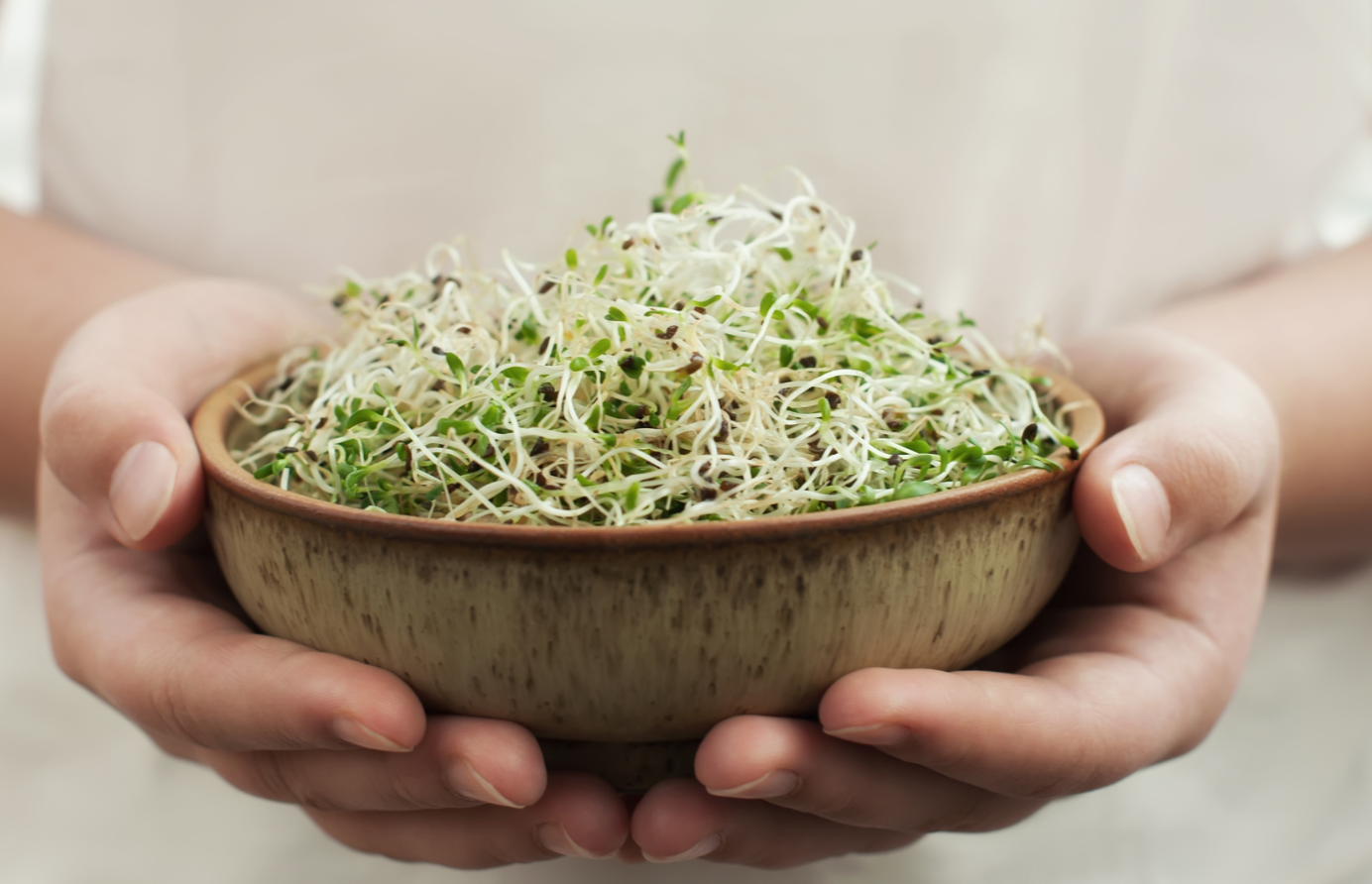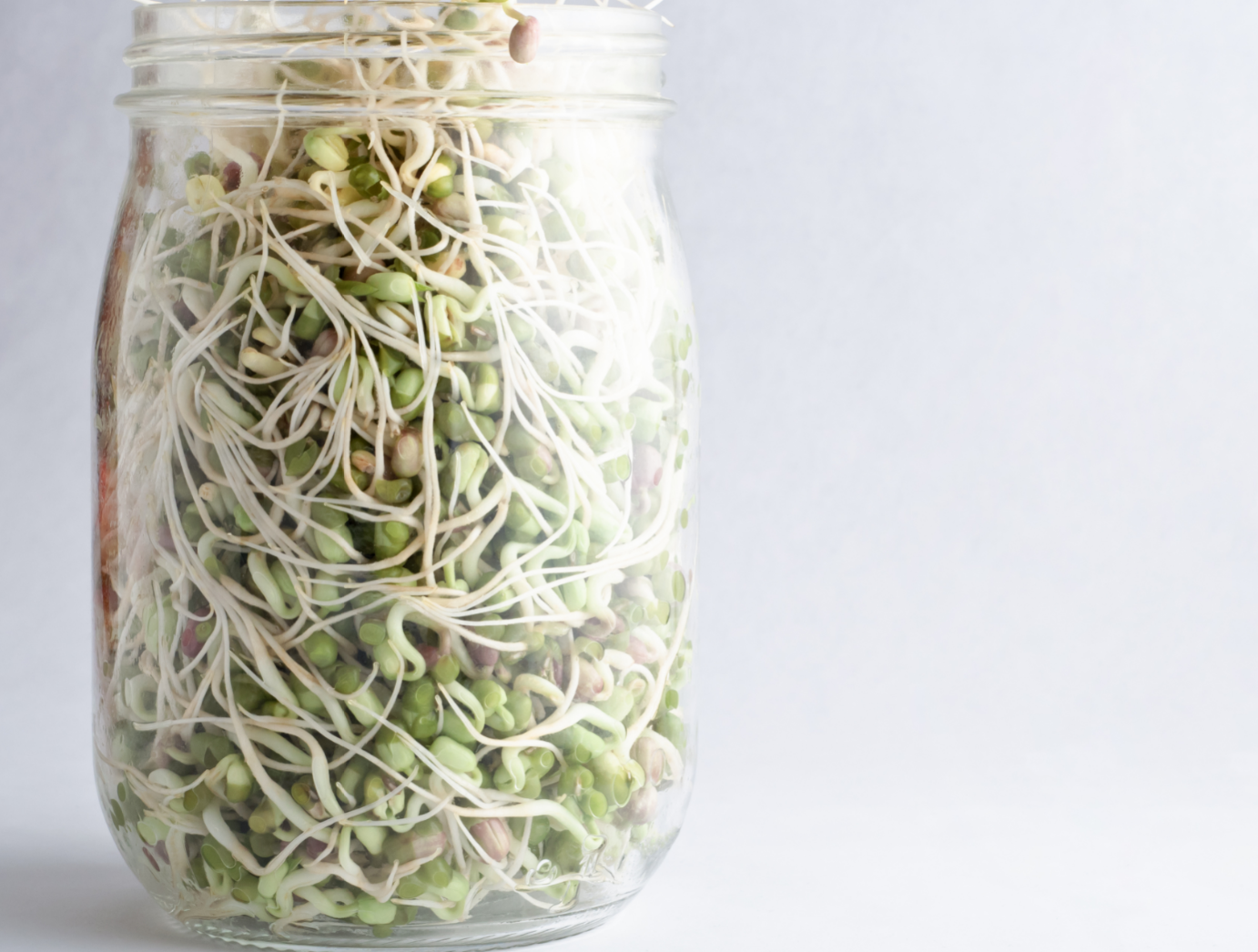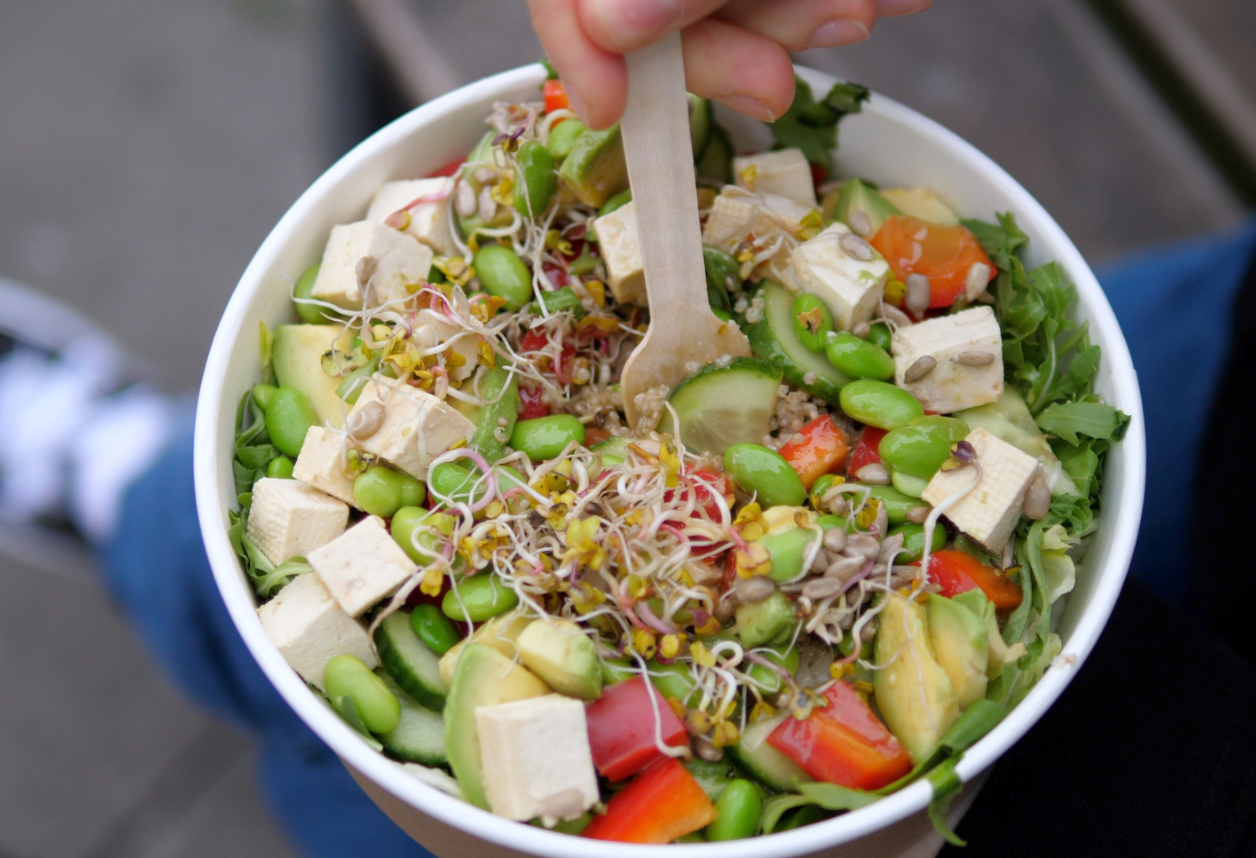Questioning what soaking and sprouting is all about? Right here’s a mini information for the why and how you can prep your seeds, grains, and beans this manner within the consolation of your personal kitch.


In case you consider a sprout, the very first thing that involves thoughts will be the handful of little white stemmed, inexperienced leafed crops that always served as a topping choice in lots of sandwich retailers. And also you’re not mistaken!
Sprouts are nutritious little greens that may be loved in a number of methods. You’ll find them at many shops, however you too can make them your self at house.
Listed below are the fundamentals of soaking and sprouting to assist get you began!
What’s sprouting?
Sprouts are germinated seeds (or child crops), so sprouting is the method of rising these.
All this implies is that the seed has put out a shoot. That is much like an present plant rising a brand new sprout from its stem, besides you’re beginning with the preliminary seed. Some frequent industrial examples embody alfalfa sprouts, mung bean sprouts, and wheat grass.
Seeds, grains, and beans work greatest for sprouting. You are able to do it at house in just some easy steps, which entails a soaking course of to encourage the seed, grain, or legume to sprout.
However first, you might be questioning why sprouts are good for you.
Advantages of soaking and sprouting
The predominant advantages to soaking and sprouting are that it may improve nutrient bioavailability and digestibility.
Legumes, nuts, and seeds include compounds that may compete along with your absorption of different vitamins within the plant, notably minerals like calcium, copper, iron, magnesium, and zinc. A few of these anti-nutrients embody phytic acid (or phytates), oxalic acid (or oxalates), and lectins.
Soaking has been proven to scale back anti-nutrient content material in sure legumes and seeds, however how a lot is determined by the kind. For instance, a 2018 comparative examine discovered that soaking soybeans and different frequent beans in distilled water earlier than cooking them considerably lowered oxalate and lectin content material, however didn’t impression phytic acid.
A 2019 examine discovered that sprouting chickpeas and inexperienced peas on an industrial scale lowered phytates with out considerably impacting their dietary high quality in any other case. However one other examine discovered that lentils not solely misplaced anti-nutrients but additionally gained amino acid and antioxidant content material after they have been sprouted. Complete rice flours have additionally been proven to lose phytic acid, however achieve antioxidants after germination. The iron bioavailability of some complete grain flours may additionally get a lift after sprouting.
Moreover, sure sprouted grains have been discovered to include extra protein than their unsprouted counterparts. A 2017 examine discovered that important amino acids considerably elevated following germination of wheat, brown rice, and triticale seeds.
Even industrial merchandise, like tofu and soy milk made utilizing sprouted soybeans, have been proven to include extra protein and considerably fewer anti-nutrients than their unsprouted counterparts.
When it comes to digestibility, sprouting seeds can even improve the availability of fiber. An older examine discovered that sprouting beans over 5 days elevated their fiber content material by 133%. Sprouting grains may additionally cut back gluten content material, which can make them simpler to digest for individuals with gluten sensitivity.
Remember that anti-nutrients are at their highest when legumes are of their uncooked, raw kind… and I don’t know anybody who enjoys an enormous bowl of raw kidney beans as a part of their food regimen. Nonetheless, soaking and sprouting can cut back anti-nutrients and enhance the bioavailability of different vitamins within the plant.


How you can develop sprouts at house
Able to sprout in your kitchen? Right here’s how you are able to do it:
First, get your self some correct sprouting tools. This could possibly be an official “sprouting jar”, which comes with a ventilated lid and presumably even a stand. It might additionally imply a mason jar with a sprouting lid, or lid you’ve poked air flow holes in your self, or a bit of cheesecloth secured with a rubber band for those who’re sprouting tiny seeds. All of them serve the identical function and there’s no mistaken strategy to do it (so long as you’re training meals security).
To soak and sprout:
- Begin with uncooked legumes, like chickpeas or navy beans, grains, or seeds. The brisker you will discover them, the higher consequence you’ll in all probability have. You possibly can normally discover luggage of exhausting, dried beans (or grains, or seeds) within the bulk part or pasta and canned items aisles at most grocery shops.
- Completely rinse your seeds and place them in your clear, sterile jar. Cowl them with filtered water that rises above them by 2-3 inches. Cowl your jar with the highest you’ve chosen.
- Go away the legumes on the counter to soak in a single day in an upright place, or round 8 hours.
- From right here you’ll be able to cook dinner the soaked beans or grains for those who’d like. In case you’re going to sprout them, then drain, rinse, and drain once more. Then stabilize the jar in an upside-down place in order that any extra moisture will exit, like within a small bowl that may catch any liquid. As soon as it stops dripping, flip the jar upright once more, as you don’t need the seeds to be completely dry. It’s greatest to maintain them out of direct daylight.
- Rinse and drain with new filtered water each 8-12 hours. They need to begin to sprout inside a couple of days. Proceed to rinse and drain as earlier than, till they develop to be round 1-2 inches in size.
- When your sprouts are prepared, rinse and drain them one final time. Then, switch them to a coated container and retailer within the fridge for 5-7 days. The earlier you utilize them, the brisker they’ll be!
Sprouts will be eaten as-is, added to salads, used as sandwich and wrap fillings, and even added to heat dishes like soups and omelets or quiches.
Meals security precautions
Lately, sprouts have been labeled a high-risk meals by the FDA. It is because they’ve a historical past of inflicting foodborne sickness outbreaks in the USA, together with Salmonella and Escherichia coli. In truth, in response to the CDC, between 2013-2017 there have been 12 outbreaks that resulted from individuals consuming sprouts.
Why is that this? There are a variety of alternatives for sprouts to develop into contaminated throughout their sprouting course of. As an illustration, industrial sprouts grown in massive fields will be contaminated by irrigation water, manure, wildlife, or unsanitary subject employee practices. They could even be uncovered to germs throughout transport. Grown at house, comparable dangers apply. Sprouts could possibly be contaminated by unsterile surfaces and tools, soiled palms, or pets in your house.
Plus, the best rising setting for sprouting – room temperature with loads of moisture – can also be the best setting for microorganisms to develop.
To assist cut back your threat for contamination:
- Solely purchase sprouts which are saved refrigerated
- Be sure that store-bought sprouts don’t include slime, mould, are limp, or scent bizarre
- When sprouting at house, wash your palms totally, disinfect surfaces, and sterilize all kitchen instruments and sprouting jars beforehand
- Retailer sprouts in clear containers at 40°F or under within the fridge
- Earlier than consuming sprouts, wash them straight below cool working water
For the typical wholesome individual, the advantages of consuming sprouts will outweigh these dangers. Nevertheless, if you’re pregnant or fall into the next threat class, such because the aged or immune-compromised populations, it could be greatest to keep away from consuming sprouts, particularly uncooked.
5 Often Wholesome Meals and Actions that Are Unhealthy Throughout Being pregnant >>


Brief-cuts to soaking and sprouting
Don’t have the time (or want) to develop your personal sprouts at house? No downside!
There are a variety of merchandise out there which are already sprouted or use sprouted legumes and grains as the principle ingredient, providing the identical dietary advantages with the addition of comfort.
A few of my favourite manufacturers making sprouted merchandise like bread, pasta, bagels, and cereals embody:
Whether or not you wish to buy pre-sprouted merchandise or develop them your self, I hope this provides you a very good place to start out. Conserving meals security practices in thoughts, you’ll be able to simply develop a wide range of sprouts in your personal kitch – and benefit from the improved diet and digestibility they provide!
Weigh-in: Have you ever tried soaking and/or sprouting legumes earlier than? Share any ideas you’ve gotten within the feedback!
For extra diet how-to assist, try a few of these posts:
– Whitney
IF YOU’RE INSPIRED BY THIS POST MAKE SURE TO SNAP A PIC
AND TAG #WHITSKITCH – I’D LOVE TO SEE!


